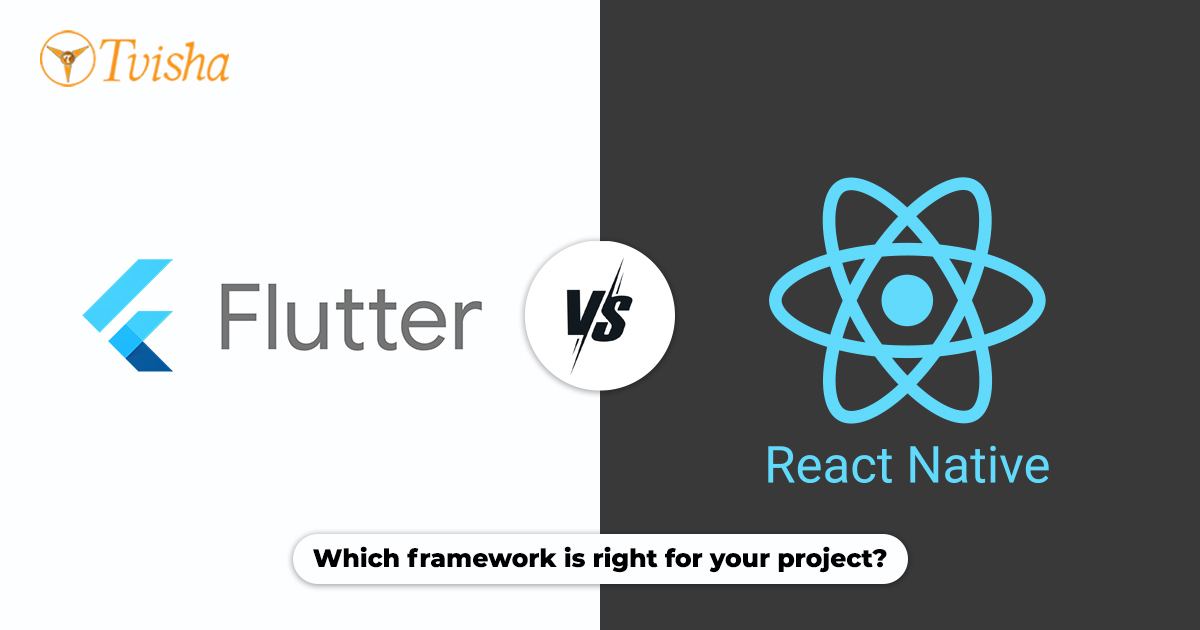
Flutter vs React Native: Which framework is right for your project?
Choosing the proper framework for mobile app development is crucial for the success of your project. In 2024, Flutter and React Native are two of the most popular frameworks offering cross-platform development but with distinct advantages and disadvantages. Understanding the difference between Flutter vs React Native can help you decide which is the best fit for your mobile app needs.
This blog will explore the key differences between Flutter Vs React Native, their performance, use cases, and which framework is suitable for your project.
1. What is Flutter?
Flutter is an open-source UI software development kit (SDK) created by Google, designed to build natively compiled applications from a single codebase. It was released in 2017 and has quickly grown in popularity due to its rich set of customizable widgets and high-performance rendering engine.
Flutter Uses:
- Mobile App Development: Flutter allows you to build apps for both Android and iOS using a single codebase.
- Web and Desktop Applications: It's not just limited to mobile; Flutter can also be used to build web and desktop apps.
- Custom UIs: The framework is known for its flexibility and customizability when building visually rich and interactive user interfaces.
Advantages of Flutter:
- Fast Development with Hot Reload: This feature allows developers to see changes in real-time without fully recompiling the app.
- Performance: Since Flutter compiles directly to machine code, it offers near-native performance.
- Rich UI Libraries: Flutter provides a wide variety of pre-built, customizable widgets that follow Material Design and Cupertino design guidelines.
- Dart Language: Flutter uses Dart, a language that is easy to learn and fast to compile.
Is Flutter Easy to Learn?
For developers already familiar with object-oriented programming languages like Java or C++, Flutter's Dart programming language is relatively easy to learn. However, there might be a learning curve for beginners as Dart is less commonly used than JavaScript, which powers React Native.
2. What is React Native?
React Native, created by Facebook, is an open-source framework that allows developers to build cross-platform mobile apps using JavaScript. Launched in 2015, React Native has been a popular choice for businesses and developers due to its ability to reuse code between platforms.
React Native Uses:
- Mobile App Development: React Native is designed to build mobile applications for both iOS and Android.
- Reusing Web Code: If you're already using React.js for web applications, much of your code and knowledge can be reused in React Native.
Advantages of React Native:
- JavaScript Ecosystem: JavaScript is one of the most widely used programming languages, making React Native more accessible to many developers.
- Large Community and Ecosystem: With a large developer community, you'll find numerous libraries, tools, and resources to speed up development.
- Performance: React Native allows you to build apps that feel native, though there's a slight performance drop compared to Flutter due to the JavaScript bridge.
- Native Modules: React Native provides built-in modules for integrating with device features like the camera or GPS, making it easier to access native components.
Is React Native Easy to Learn?
If you are familiar with JavaScript or React.js, React Native will feel natural. The learning curve is minimal for web developers transitioning into mobile app development.
3. Flutter vs React Native: Performance Comparison
When it comes to React Native vs Flutter performance, Flutter typically has the upper hand. Flutter compiles directly to machine code, eliminating the need for a bridge between the app and the native environment. This results in better performance, smoother animations, and faster startup times.
React Native, on the other hand, relies on a JavaScript bridge to communicate with native components, which can lead to performance bottlenecks in complex apps. However, for most business applications, the difference is hardly noticeable, and React Native mobile apps perform sufficiently well.
Performance Verdict:
Flutter is ideal for applications requiring high performance and visually rich UIs.
React Native performs well for most apps but may lag slightly in more complex scenarios requiring deep native integration.
4. Flutter vs. React Native 2024: Key Differences
Let's look at some core differences between Flutter and React Native that can help guide your decision.
| Feature | Flutter | React Native |
| Programming Language | Dart | JavaScript |
| Performance |
Near-native performance due to direct compilation |
Good, but slightly lagging in complex scenarios |
| Community and Ecosystem | Growing rapidly but still smaller than React Native | Large, with extensive third-party libraries |
| Learning Curve | Moderate, due to Dart | Easy, especially for developers familiar with JavaScript |
| UI Customization | Highly customizable with a rich widget library | Customizable but relies more on native components |
| Code Reuse | Excellent for sharing code across platforms | Strong, especially if transitioning from React.js |
5. Which One Should You Choose for Your Mobile App?
- Choose Flutter: if you're building a visually rich, high-performance app, especially if your app has a lot of animations and custom UI components. Flutter's advantages of rich UI design and smooth performance make it the best choice for complex projects.
- Choose React Native: if you have a team familiar with JavaScript or want to reuse code from an existing web project. The vast React Native ecosystem also makes finding third-party libraries and resources more accessible, speeding up development.
6. What Is Flutter Used For in 2024?
In 2024, Flutter is increasingly being used by mobile app development companies and software development companies for the following:
- Building high-performance mobile apps for Android and iOS.
- Developing web applications using a single codebase.
- Creating complex UIs that require pixel-perfect customization.
- Building desktop applications alongside mobile and web apps.
React vs. React Native: Understanding the Differences
It's important to note that React and React Native are related but serve different purposes. React is a JavaScript library for building user interfaces on the web, while React Native is a framework that allows you to create mobile applications using React's component-based architecture. If you're already using React for web development, transitioning to React Native is relatively straightforward, which is a significant advantage.
Closing Thoughts:
In 2024, the decision between Flutter vs React Native depends mainly on your project's goals, team expertise, and app requirements. Flutter excels in performance, UI flexibility, and complex app development, making it ideal for businesses building visually rich applications. React Native, on the other hand, offers ease of use, faster development for JavaScript developers, and a large ecosystem.
Both frameworks are powerful tools for mobile app development, and the right choice will depend on your specific project needs.
Whether you're a mobile app development company or a software development company, understanding the strengths and limitations of each framework will help you create better, more efficient apps.
















 Whatsapp
Whatsapp
 Email
Email


